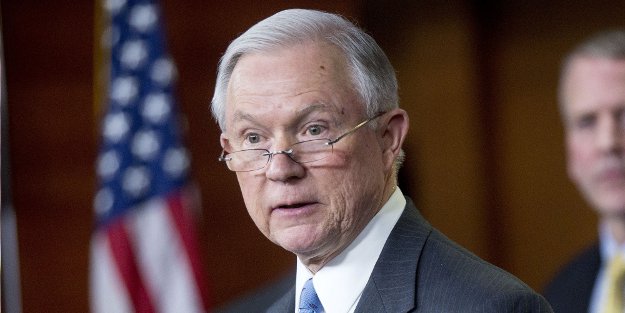Donald Trump: The Worst President on Minority Issues in Decades?

This is an excerpt from an article originally published in BlackVoiceNews.com. Read the rest of the article here.
Donald Trump, a man best known as a “birther” with a reality TV show and a real estate empire, who claimed that Mexico was sending drugs and rapists to the United States, was sworn in as president on January 20, 2017. What happened next was predictable and we should expect more of the same in 2018.
Here are seven decisions from the past year confirming that Trump has been the worst president for African Americans, Hispanics and other minorities over the last 50 years.
1. Trump picks Jeff Sessions to succeed Loretta Lynch as Attorney General of the U.S. Trump went out of his way to make sure that his administration’s justice policy reflected 1940s America, when he selected Jefferson Beauregard Sessions III as his attorney general.
According to a Huffington Post article published in January 2017, Sessions not only supported gutting the Voting Rights Act in 2013, he also has “a record of blocking Black judicial nominees.” Sessions, “unsuccessfully prosecuted Black civil rights activists for voter fraud in 1985―including a former aide to Martin Luther King, Jr.”
Since, Sessions has taken over at the Justice Department, he has recused himself from an investigation into Russian involvement in the 2016 presidential election and ordered a review of Obama era police reforms.
This is one time where the selection of Rudy Giuliani for attorney general may have actually looked like a more moderate choice.
2. Trump says “there were very fine people on both sides” at the Charlottesville White nationalists rally, during a Trump Tower press conference. Never mind that one of the largest gatherings of racists in America since the end of the Civil Rights Movement occurred only eight months into Trump’s presidency. Put that aside. Trump’s “both sides” comments on who was to blame for the public street fight in the college town was all anyone needed to understand regarding the thinking of America’s 45th president on the issue of race.
“I am not putting anybody on a moral plane, what I’m saying is this: you had a group on one side and a group on the other, and they came at each other with clubs, and it was vicious and horrible and it was a horrible thing to watch, but there is another side,” said Trump. “But you also had people that were very fine people on both sides.”
Trump also said, “I’ve condemned many different groups, but not all of those people were neo-Nazis, believe me. Not all of those people were white supremacists by any stretch. Those people were also there, because they wanted to protest the taking down of a statue Robert E. Lee.”

3. Trump calls for NFL owners to fire players over silent protests. Trump said NFL owners should respond to the players by saying, “Get that son of a bitch off the field right now, he’s fired. He’s fired!” Just in case you missed it with his comments on Charlottesville, Trump was back again to spoil the start of the NFL season by commenting on players who dared to silently protest racial injustice by kneeling during the national anthem. Trump called kneeling during the anthem, “a total disrespect of our heritage,” and a “total disrespect for everything we stand for.” The result was more protests by NFL players who then locked arms on sidelines across the U.S. with many White players and coaches participating.
Even Rush Limbaugh found himself having issues with Trump on this one. “There’s a part of this story that’s starting to make me nervous, and it’s this: I am very uncomfortable with the President of the United States being able to dictate the behavior and power of anybody,” said Limbaugh. “That’s not where this should be coming from.”
4. Trump uses an executive order to block travel of refugees from majority-Muslim countries to the U.S. When you have former staffers for Jeff Sessions writing executive orders on immigration policy, you can expect what happened at the Trump White House on January 27, 2017. With absolutely no warning, on the seventh day of his presidency, Trump signed an immigration and travel executive order. This order had Steven Miller’s fingerprints all over it. After a few days of chaos and protests at airports across the nation, federal judges to applied an initial smackdown blocking the order. But Trump’s DOJ revised the order to pass some of those legal tests.
This is an excerpt from an article originally published in BlackVoiceNews.com. Read the rest of the article here.




























































































































































































































































































































